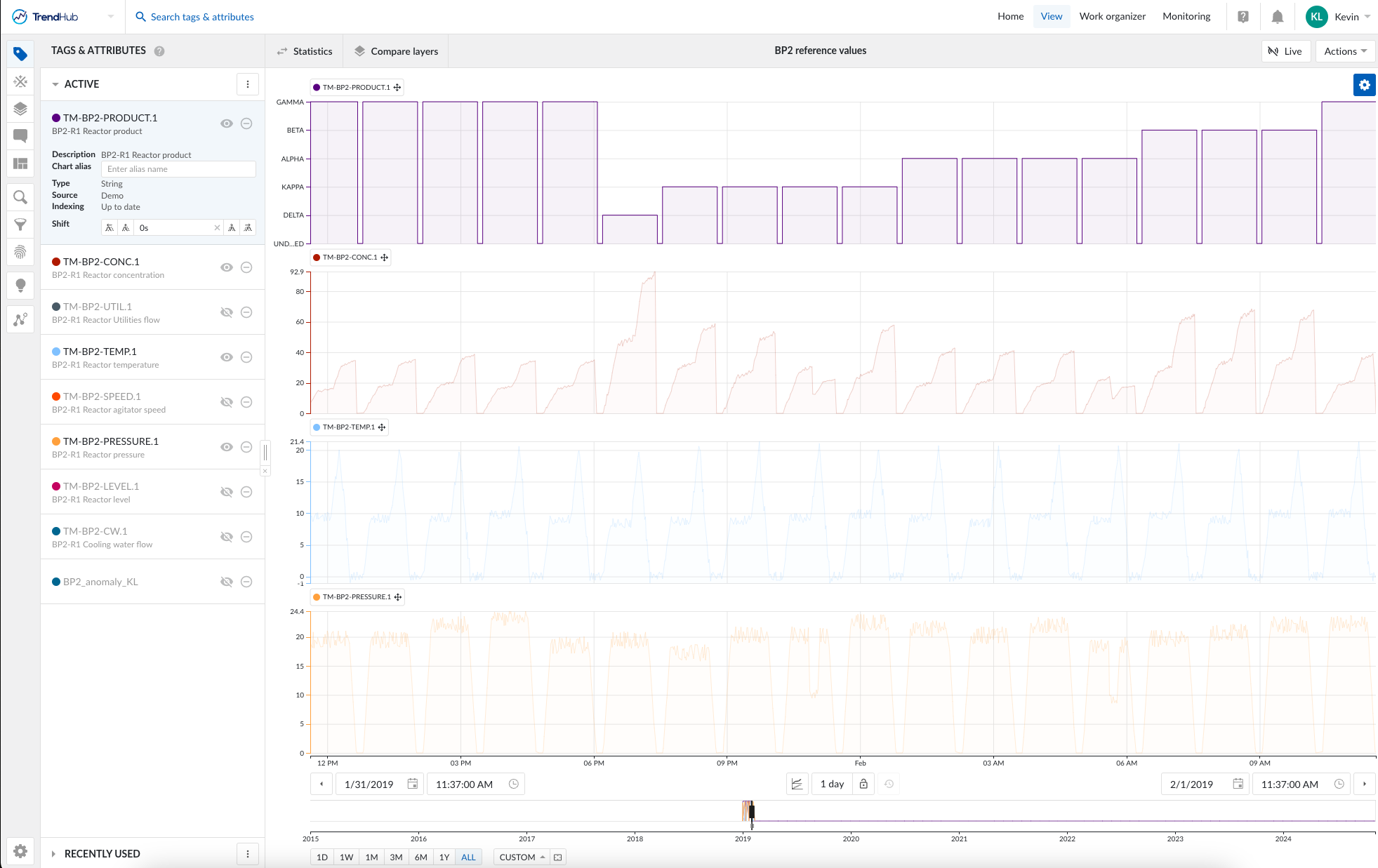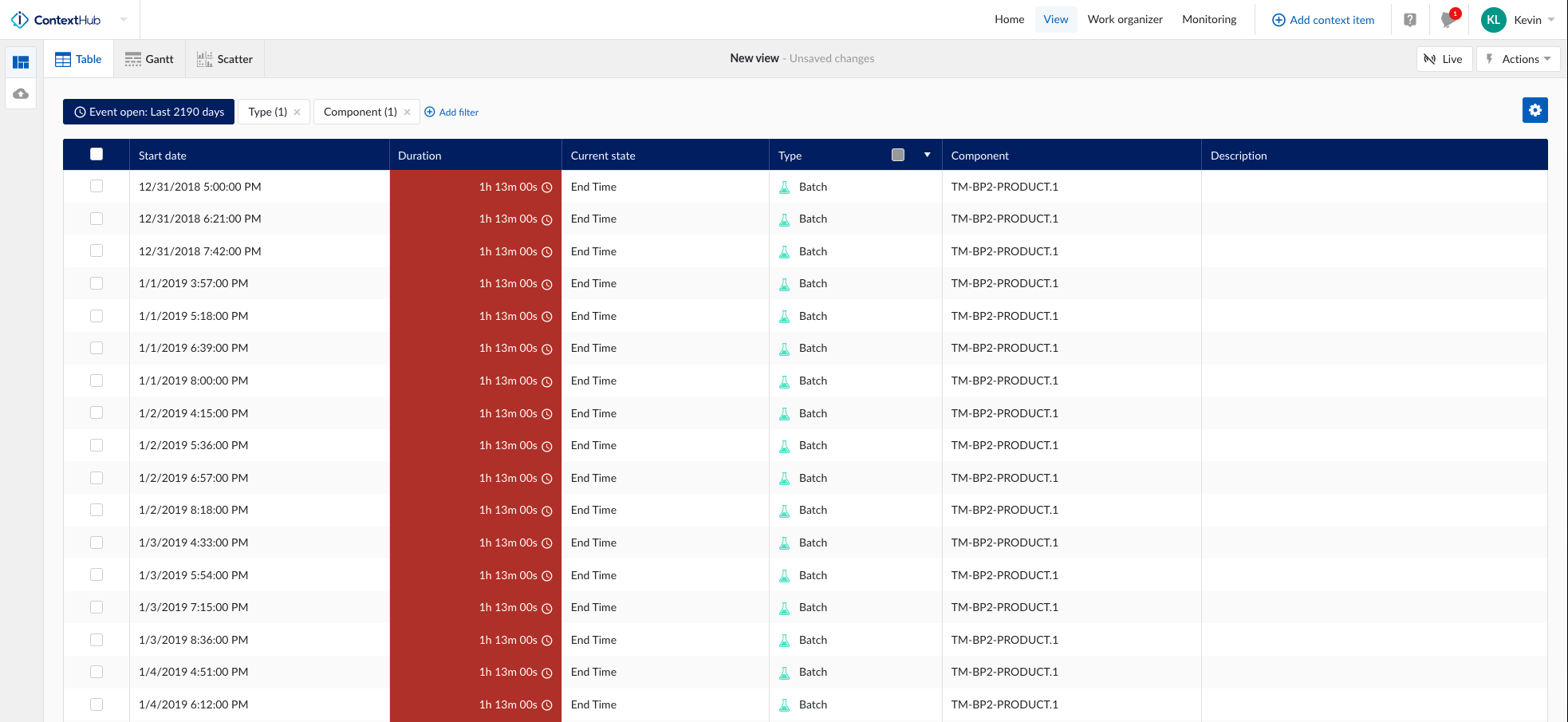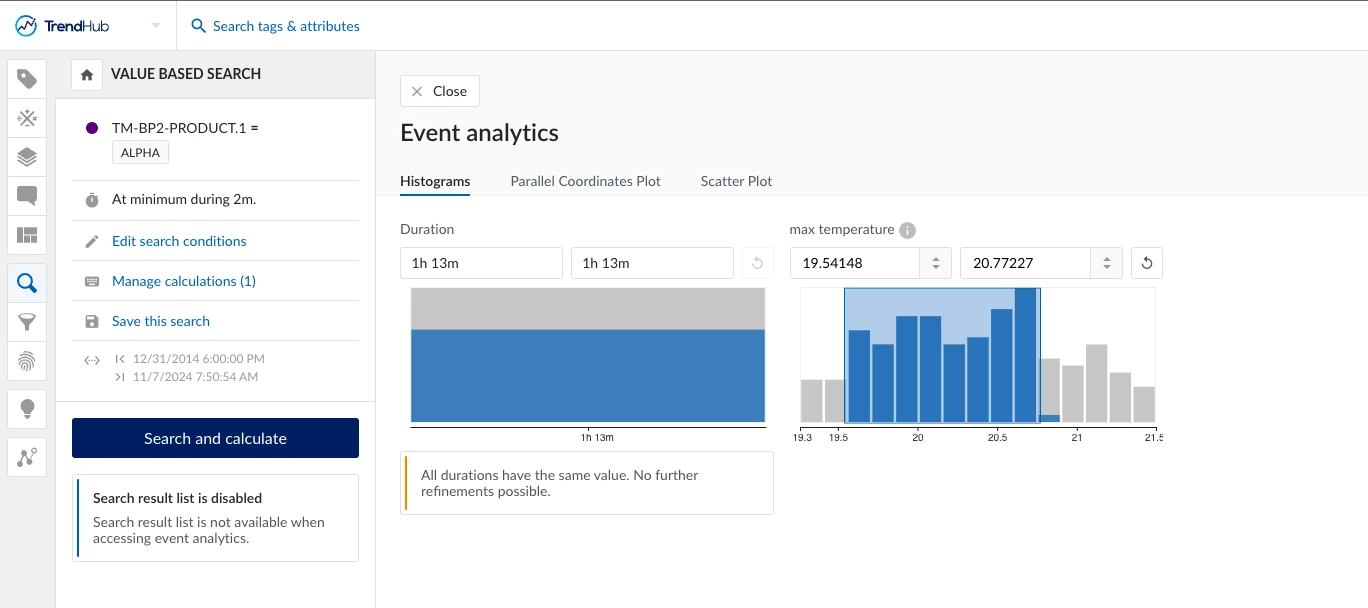Background
In batch processes, tracking key metrics like batch start and end times, cycle durations, and critical values such as maximum temperature can provide valuable insights. For instance, maintaining temperature within a certain threshold during a batch step can prevent quality issues and ensure process safety. This use case will guide you through how to document, track, and analyze batch cycle times, utilizing TrendMiner’s TrendHub and ContextHub features to streamline and automate this process.
Challenge
Traditionally, batch cycle times have been recorded manually in Excel spreadsheets by board operators. This manual entry system often results in inconsistencies, especially when operators miss recording the start or end times of batches. TrendMiner provides a more reliable solution by automatically identifying and documenting batch steps and storing this information alongside tag data. By automating these records, TrendMiner reduces the reliance on Excel and increases accuracy.
Solution
-
Identify Key Process Tags
Select process tags that clearly indicate batch start and end times. An ideal tag would signal “on” at the start of a batch step and “off” at its end.
Product tag has clearly defined states representing the batch product run. -
Create a Value-Based Search
Use a value-based search to identify when a batch step is active. In this case, set the search criteria to find instances where the batch tag is “on.” Adjust the context bar time period to focus on events within the desired timeframe.
Value-based search defined to search for all ALPHA batches. -
Add Calculations (Optional)
If you want to calculate specific metrics like maximum temperature during each batch, include a calculation in your search criteria. TrendMiner allows up to 30 calculations per search, so you can capture as many metrics as necessary.
Add max temperature calculation to the value-based search. -
Refine Search Results Using Event Analytics (Optional)
Use Event Analytics to filter or refine search results further. For instance, you can filter based on duration or specific calculated values if some search results don’t meet your criteria.
Refine search results in Event Analytics. -
Add Search Results as Context Items
Save the search results as context items, choosing the appropriate context item type and associated tag. If a custom item type is needed, reach out to your TrendMiner administrator to set it up.
Add search results as context items. 
Select the component and context item type when creating the context items. Calculations on search results can also be mapped as context item fields. -
View Context Items in ContextHub
In ContextHub, view your context items as a table, Gantt chart, or scatter plot. Select the appropriate filters for context item type and component, ensuring your time window is set to the correct period.
Table view of context items with filters on Type and Component columns. -
Apply Conditional Formatting
In ContextHub, apply conditional formatting to highlight important data points. For example, you can format cells in the duration column to turn red if batch cycle times exceed a specific threshold.
Apply conditional formatting based on custom rules. In this screenshot, any duration over one hour is colored red. -
Save the ContextHub View
Save your filtered, formatted ContextHub view for easy access in future analyses.
Value
With TrendMiner, there’s no need for a separate Excel spreadsheet for batch tracking. Automatic batch detection eliminates human error, ensuring accurate and reliable batch cycle data. The improved data quality allows for deeper data analysis, leading to insights that can improve batch efficiency and throughput.



